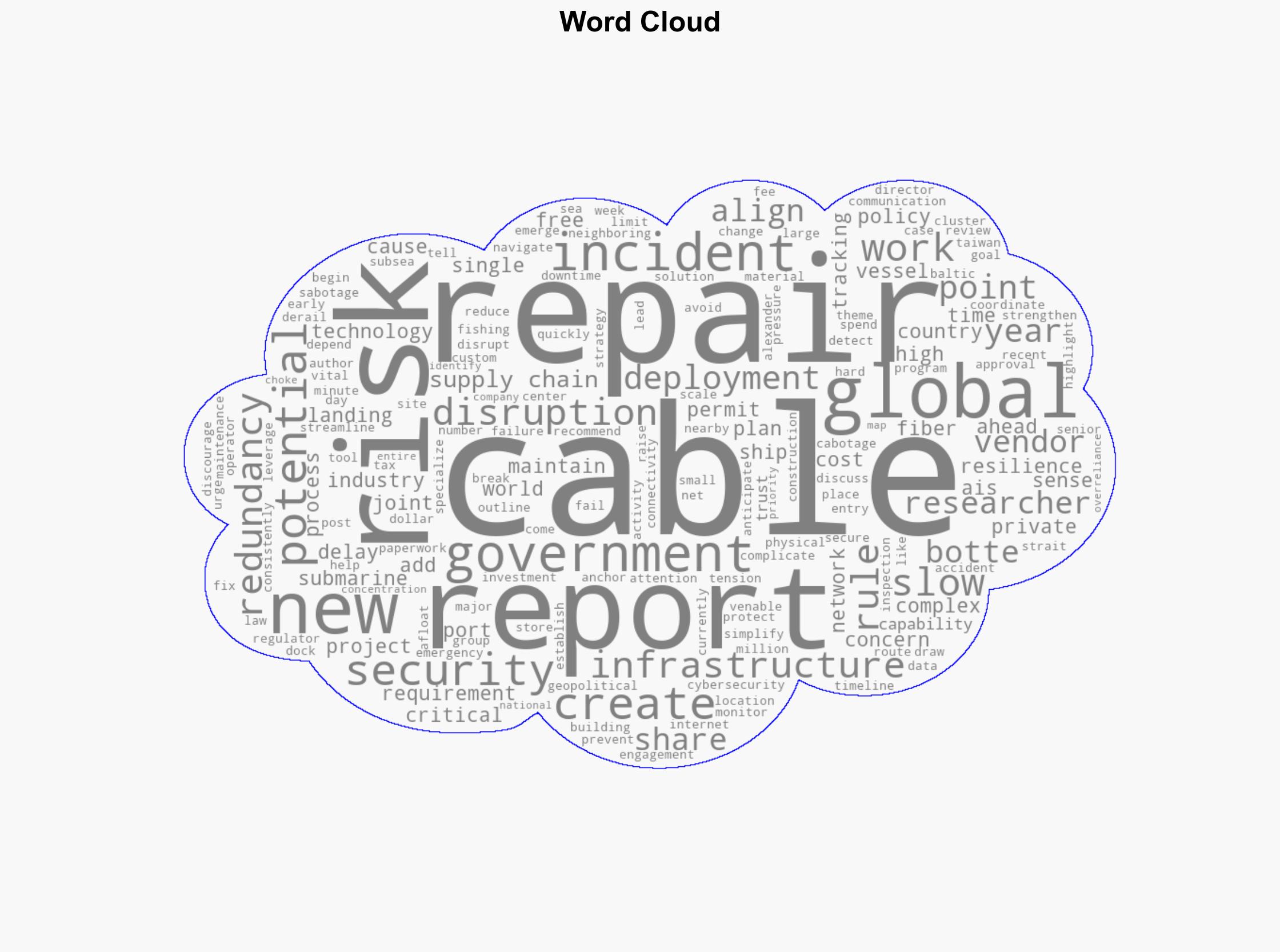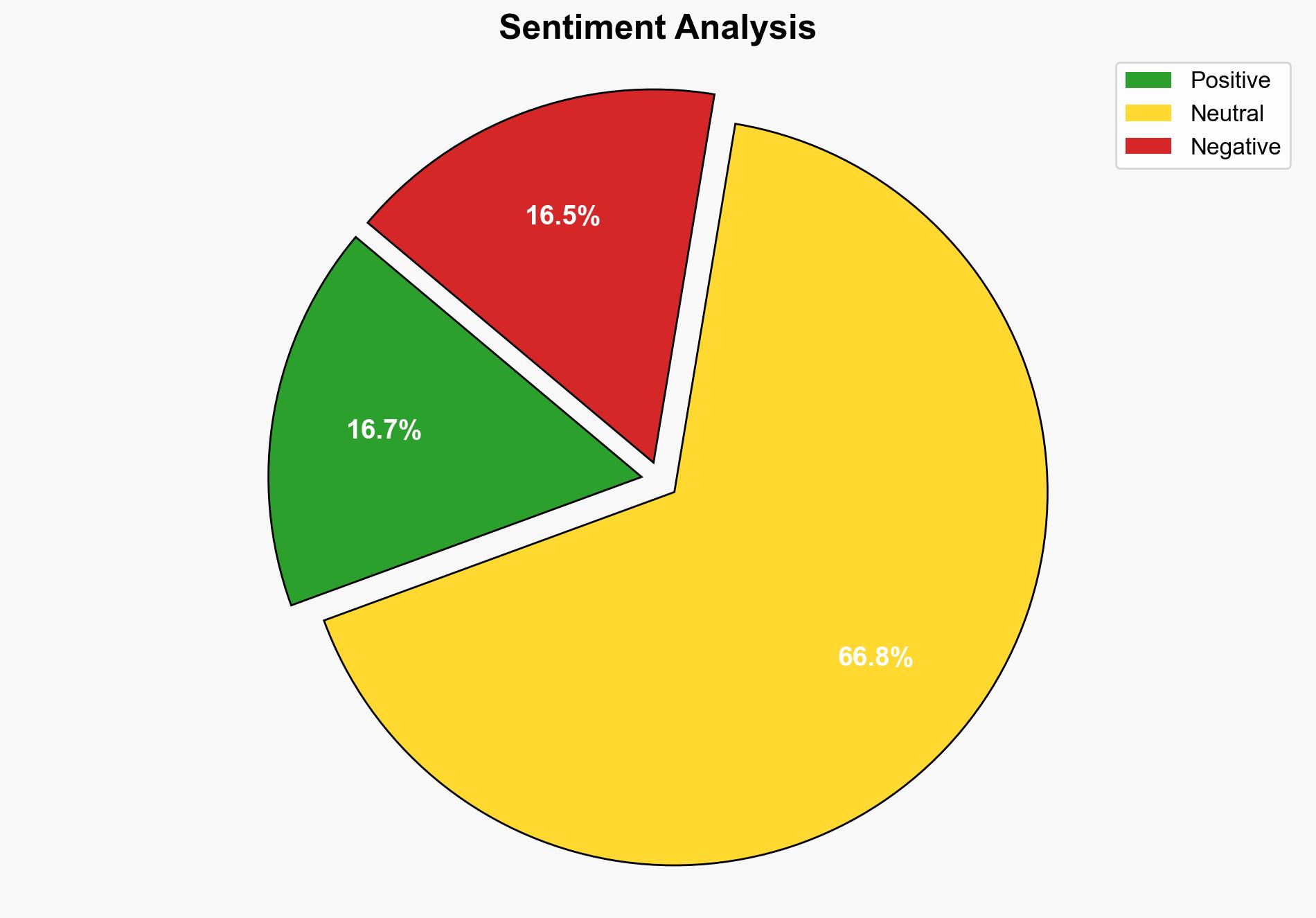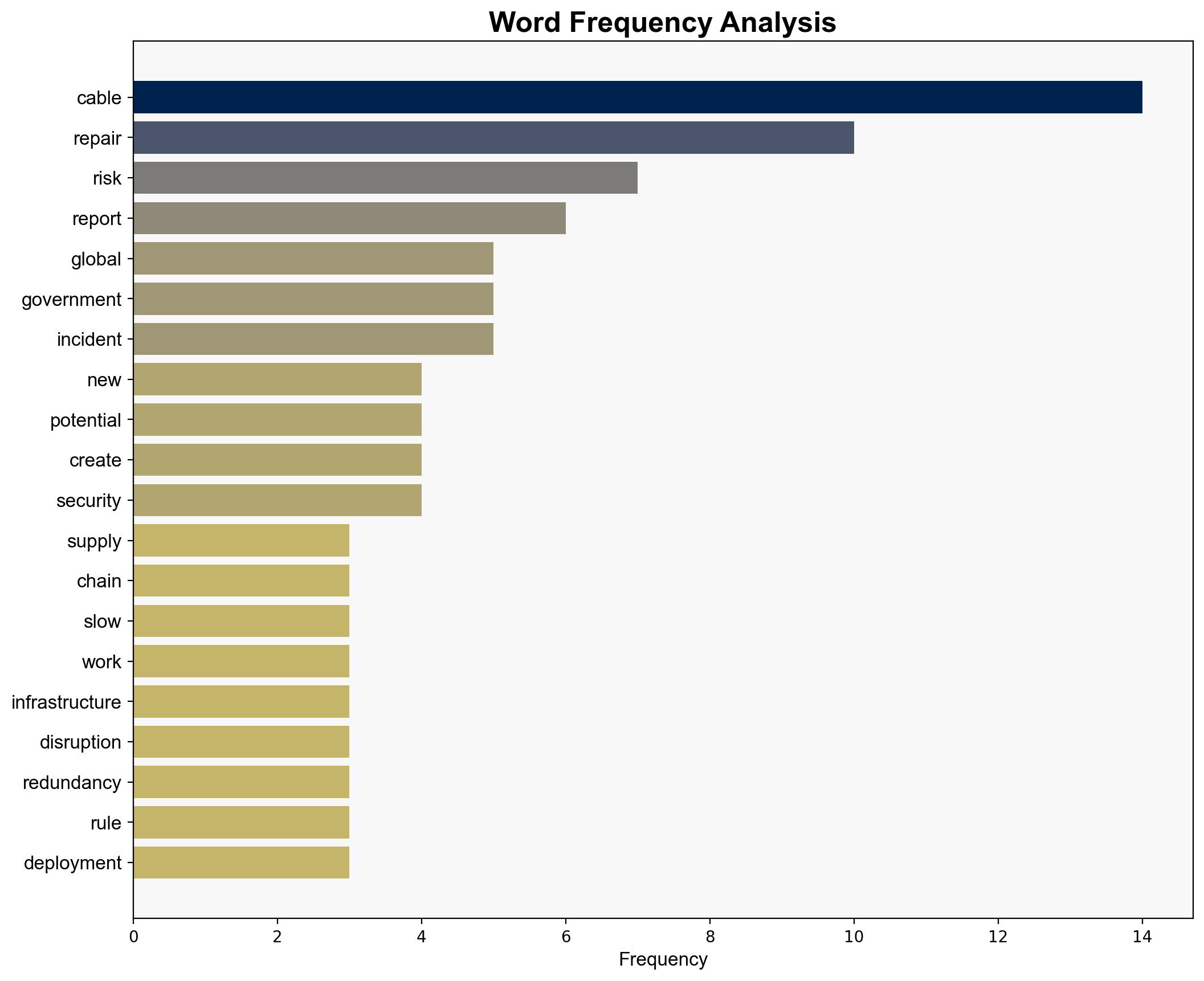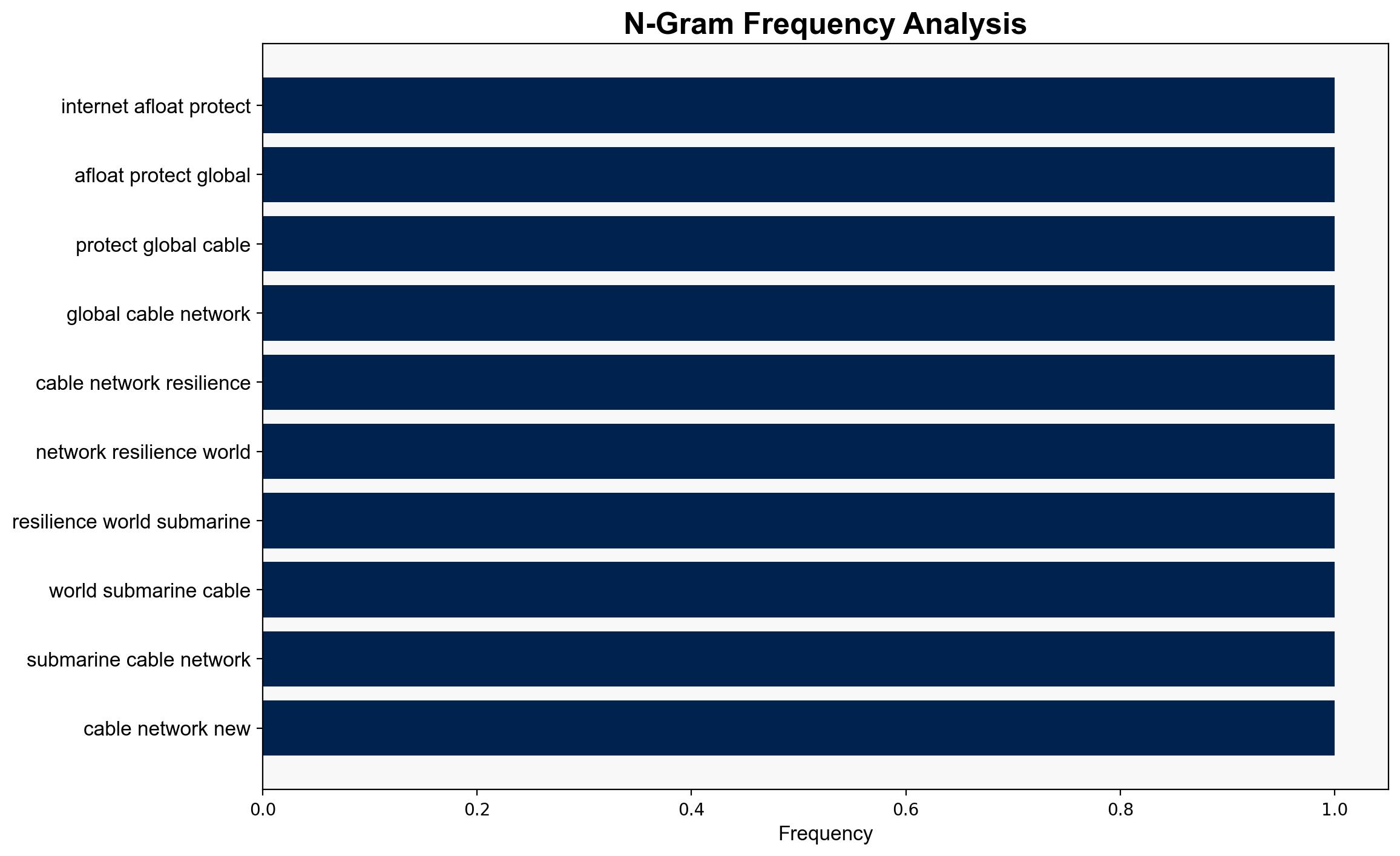Keeping the internet afloat How to protect the global cable network – Help Net Security
Published on: 2025-09-30
Intelligence Report: Keeping the internet afloat How to protect the global cable network – Help Net Security
1. BLUF (Bottom Line Up Front)
The most supported hypothesis is that geopolitical tensions and regulatory complexities are the primary threats to the global submarine cable network’s resilience. Confidence level: Moderate. Recommended action: Streamline international regulatory processes and enhance collaborative security measures to protect critical infrastructure.
2. Competing Hypotheses
Hypothesis 1: Geopolitical tensions and regulatory hurdles are the main threats to the resilience of the global submarine cable network. This hypothesis suggests that the complexity of international regulations, combined with geopolitical tensions, significantly increases the risk of disruption and delays in cable deployment and repair.
Hypothesis 2: The primary threat to the submarine cable network is the concentration of supply chain dependencies and limited repair capabilities. This hypothesis posits that the reliance on a small number of vendors and specialized repair ships creates vulnerabilities that could be exploited, leading to prolonged outages.
Using the Analysis of Competing Hypotheses (ACH) 2.0, Hypothesis 1 is better supported due to the emphasis on regulatory and geopolitical challenges in the source text, which are highlighted as major barriers to infrastructure resilience.
3. Key Assumptions and Red Flags
– Assumption: Governments and private sectors will cooperate effectively to streamline regulations and enhance security measures.
– Red Flag: Over-reliance on a limited number of vendors and repair ships could be underestimated, leading to potential blind spots in risk assessment.
– Missing Data: Specific examples of successful international cooperation in cable deployment and repair are not provided, which could indicate a lack of precedent.
4. Implications and Strategic Risks
– Economic Impact: Disruptions in the submarine cable network could lead to significant economic losses due to interrupted global communications.
– Geopolitical Risks: Increased tensions in regions like the Baltic Sea and Taiwan Strait could escalate into broader conflicts affecting cable infrastructure.
– Cybersecurity Threats: Vulnerabilities in the supply chain could be exploited by malicious actors, leading to potential cyber-attacks on critical infrastructure.
5. Recommendations and Outlook
- Streamline international regulatory processes to expedite cable deployment and repair.
- Enhance collaboration between governments and private sectors to develop joint emergency repair programs.
- Invest in diversifying the supply chain and increasing the number of specialized repair ships.
- Scenario Projections:
- Best Case: Streamlined regulations and enhanced security measures lead to improved resilience and reduced outage times.
- Worst Case: Geopolitical tensions escalate, leading to significant disruptions and prolonged outages.
- Most Likely: Incremental improvements in regulatory processes and security measures, with occasional disruptions due to geopolitical tensions.
6. Key Individuals and Entities
– Alexander Botte, Senior Director, Global Security Technology Strategy, Venable
7. Thematic Tags
national security threats, cybersecurity, counter-terrorism, regional focus




